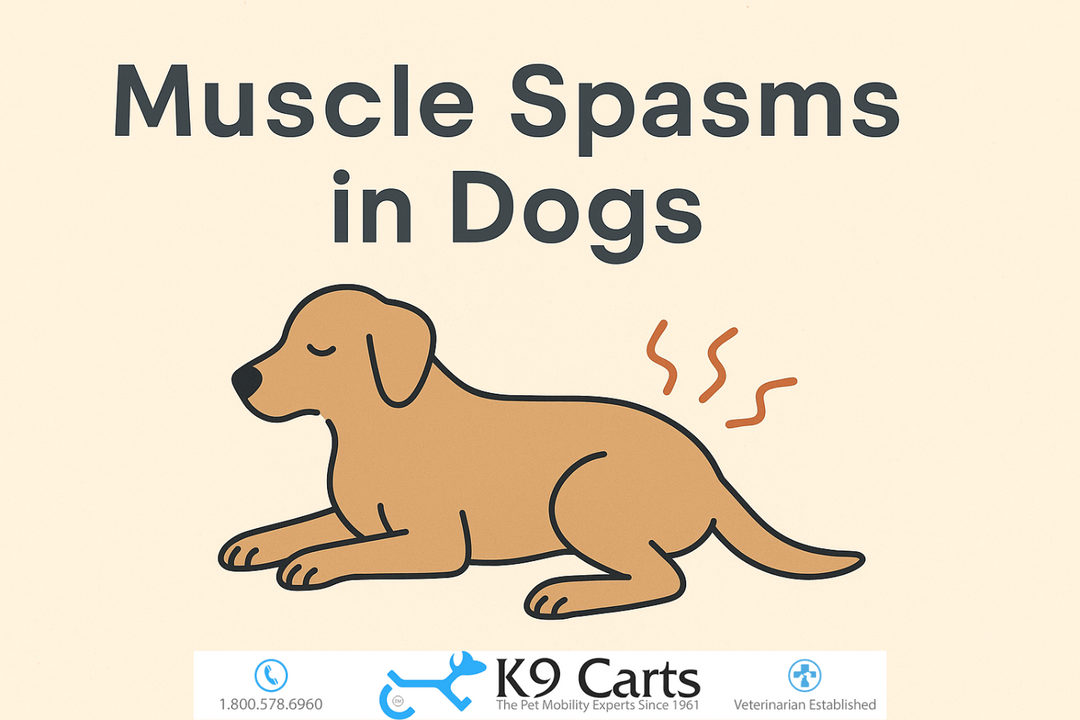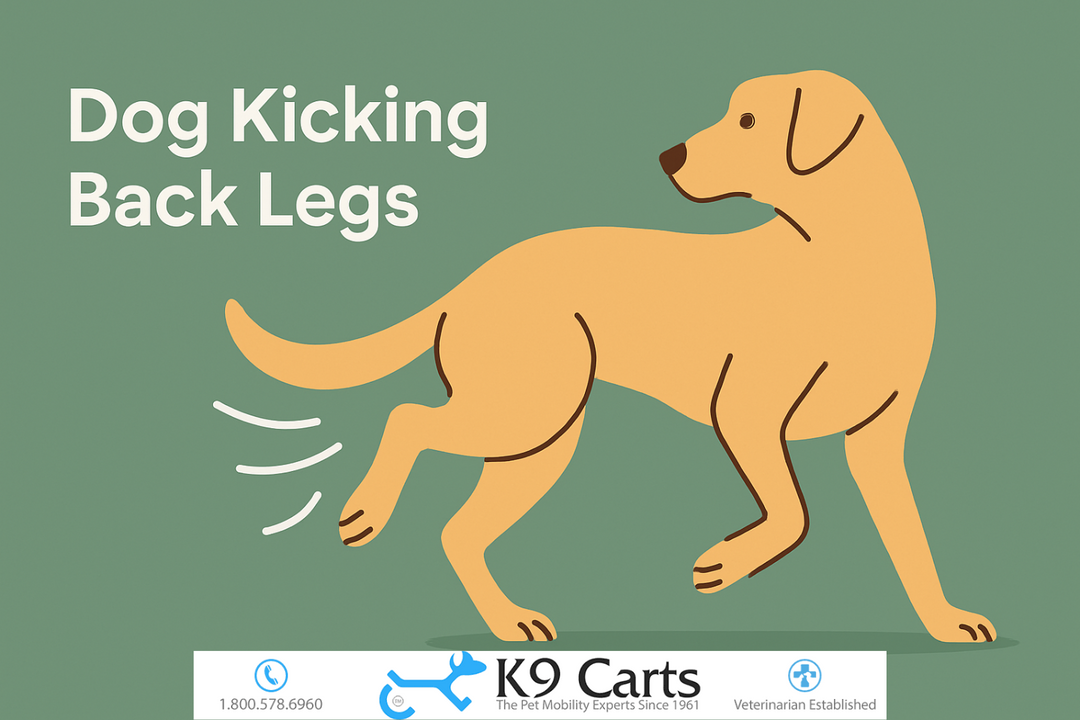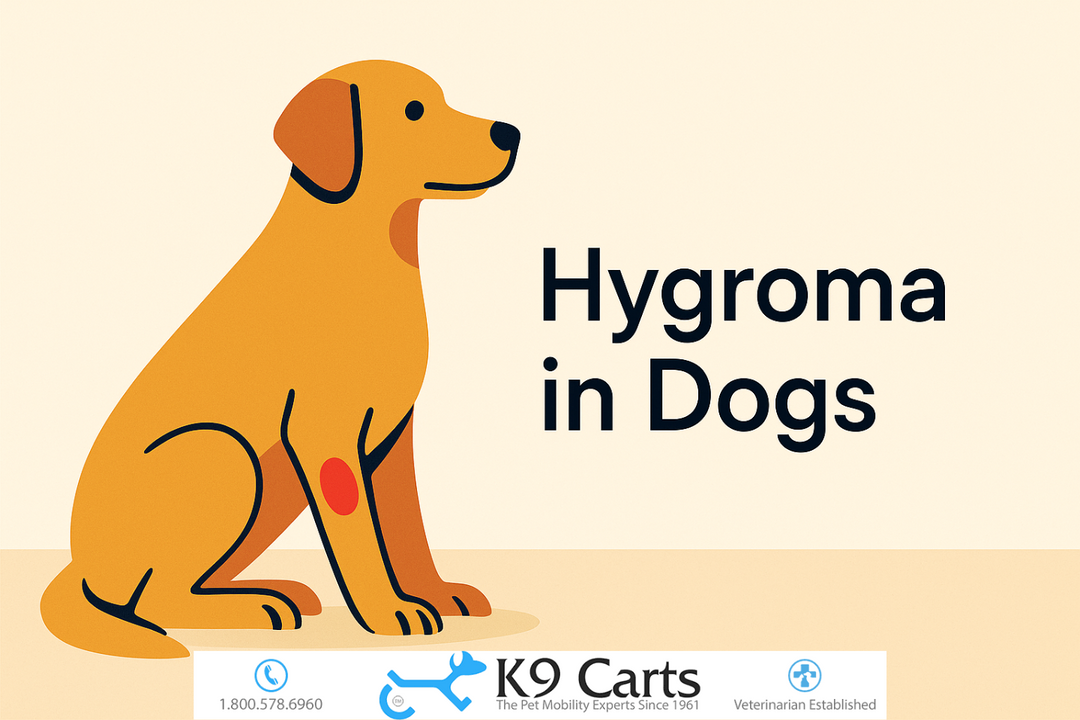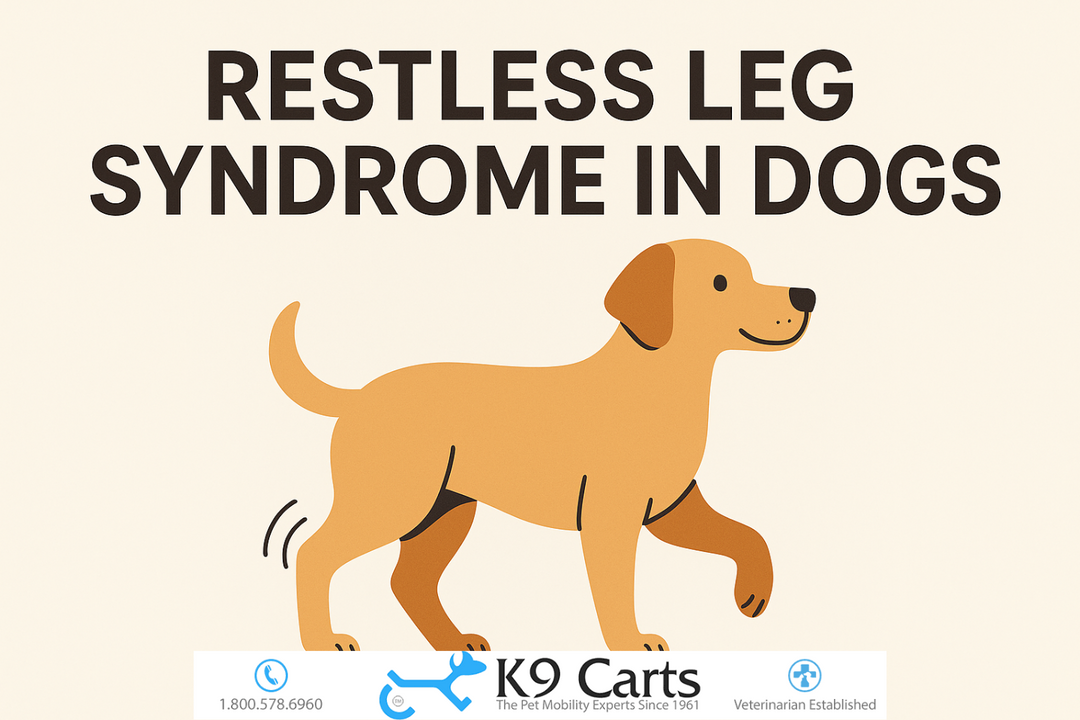What Causes Muscle Spasms in Dogs' Hind Legs? How Are They Treated?

Muscle spasms in a dog's back legs can be a serious issue, especially when they start happening more often. For some dogs, these spasms are mild and short. For others, they can last longer and come with pain or weakness.
If you're a dog owner dealing with this, it's important to know what causes these spasms, what to watch out for, and how to treat them in a way that helps your dog feel better and stay mobile.
Let’s break it down clearly, from the most common causes to treatment options that really work.
What Is a Muscle Spasm in Dogs?
A muscle spasm happens when a muscle tightens up on its own and won’t relax. It’s not something your dog controls. In the hind legs, this can look like shaking, twitching, sudden stiffness, or even a jerking motion. It may last just a few seconds, or it could go on for a few minutes.
Some dogs limp or try to avoid using the leg when it happens. Others may whine or look uncomfortable. Spasms are different from tremors or seizures. Dogs with seizures usually lose awareness. Dogs having muscle spasms are awake and know what’s going on, but they might seem scared or confused.
Why Do Muscle Spasms Happen in a Dog’s Back Legs?
There are several possible reasons. Some are simple and easy to fix. Others may need more care and attention.
1. Overuse and Muscle Fatigue
When dogs run or play too hard, their muscles can get tired or strained. Just like people can get cramps from exercise, dogs can too. This is especially true for dogs that aren’t used to a lot of activity or have been out in hot weather.
2. Dehydration and Low Electrolytes
Water keeps muscles working right. When a dog is dehydrated or has lost minerals like potassium or calcium, their muscles can start to cramp. This happens more often in very active dogs or in dogs who’ve been sick with vomiting or diarrhea.
3. Muscle Injuries
A pulled muscle or a minor injury from slipping, jumping, or rough play can lead to spasms. Sometimes the muscle gets inflamed and starts to tighten up without warning.
4. Joint or Spine Problems
When there's pressure on the nerves in the spine or hips, it can affect how the muscles behave. Conditions like hip dysplasia or arthritis can lead to spasms. Dogs may try to shift their weight to avoid pain, which can cause muscles in the back legs to tighten or twitch.
5. Nerve Damage or Neurological Disease
Nerve signals control how muscles move. If something is affecting the nerves (like a spine injury or a disease that damages nerve tissue), muscles may spasm, twitch, or even lose function. In some dogs, this can lead to progressive weakness in the back legs.
6. Breed-Specific Issues
Some breeds are born with conditions that can cause muscle spasms in the back legs. For example, Dobermans can develop something called Dancing Doberman Disease. Scottish Terriers can suffer from Scotty Cramp. These are inherited problems that usually show up early in life.
7. Reactions to Toxins or Medications
Some toxins, like pesticides or certain human foods, can cause muscle spasms. Even some flea and tick medications have been known to trigger twitching in sensitive dogs. If the spasms started after a new medication or accidental exposure, tell your vet right away.
What Signs Should You Look For?
Muscle spasms in the hind legs don’t always look the same. These are some signs that suggest your dog might be having them:
-
Sudden leg twitching or shaking
-
Stiffness in one or both back legs
-
Limping or refusing to put weight on a leg
-
Whining or signs of discomfort
-
Licking or biting at the leg
-
Change in posture or gait
-
Loss of balance or coordination
If the spasms happen often, last more than a few seconds, or come with other signs like vomiting, drooling, or confusion, it’s time to see a vet.
How Vets Figure Out the Cause
Your vet will start by asking questions and doing a full physical exam. They’ll want to know how often the spasms happen, what they look like, and if there are any other changes in your dog’s behavior.
Depending on the case, your vet may also run tests:
-
Bloodwork to check for low calcium or other imbalances
-
X-rays to look at joints or bones
-
Imaging of the spine if a nerve problem is suspected
-
Muscle or nerve tests in more complex cases
If your dog belongs to a breed with known genetic conditions, your vet may suggest breed-specific tests too.
Treatment Options That Work
Treatment depends on what’s causing the problem. Some dogs need only rest and hydration. Others need more ongoing care. Here’s how treatment is usually approached.
Basic Care and Relief
-
Rest: Letting the dog rest for a few days can help mild muscle strain or fatigue heal on its own.
-
Hydration: Make sure your dog has access to clean water at all times. If your vet finds an imbalance, they may give fluids or supplements.
-
Heat or Cold Packs: For sore muscles, a warm compress may help. For swelling or after activity, a cold pack is better. Always use a towel between the pack and your dog’s skin.
Medication
If your dog is in pain or the spasms are causing distress, your vet might prescribe:
-
Muscle relaxants
-
Pain relief medications
-
Anti-inflammatory medications
-
Medications for nerve-related issues, if needed
Never give your dog human medicine without checking with your vet first.
Physical Therapy
Massage, stretching, and low-impact exercise like swimming can improve muscle health and reduce spasms. A rehab therapist can show you safe exercises to do at home.
Canine Wheelchair
If your dog has trouble using their hind legs, a wheelchair may help. At K9 Carts, we design lightweight, adjustable wheelchairs that are custom-built to fit your dog’s size, shape, and condition. A good cart takes pressure off the hind legs, allowing muscles to relax and recover while your dog stays mobile and happy.
Wheelchairs are not just for dogs who can’t walk. They’re helpful for dogs recovering from surgery, managing arthritis, or dealing with nerve damage. Many dogs use them part-time during flare-ups and get back on their feet faster with less strain.
How to Support Your Dog’s Recovery
You can do a lot at home to support your dog’s recovery and comfort:
-
Keep them hydrated, especially during warmer months or after activity
-
Give them a quiet, soft place to rest
-
Use ramps instead of stairs when possible
-
Keep nails trimmed to avoid slips
-
Stick to regular, gentle walks unless your vet says otherwise
Most important, pay attention. If something changes, such as more frequent spasms, signs of pain, or changes in behavior, get in touch with your vet.
Closing Thoughts on Muscle Spasms in Dogs' Back Legs
Muscle spasms in the back legs aren’t always serious, but they can be a sign that something’s off. The earlier you figure out the cause, the better your chances of treating it before it gets worse.
In some cases, rest, hydration, and simple care are enough. In others, long-term support may be needed. If your dog struggles with ongoing weakness, a custom dog wheelchair can make a huge difference. It keeps them moving, keeps muscles working, and helps them stay social and active, which is good for both their body and their mood.
At K9 Carts, we build wheelchairs that are tailored to your dog’s unique needs. They’re easy to use, fully adjustable, and designed by veterinary professionals. If your dog needs that extra support, we’re here to help.





